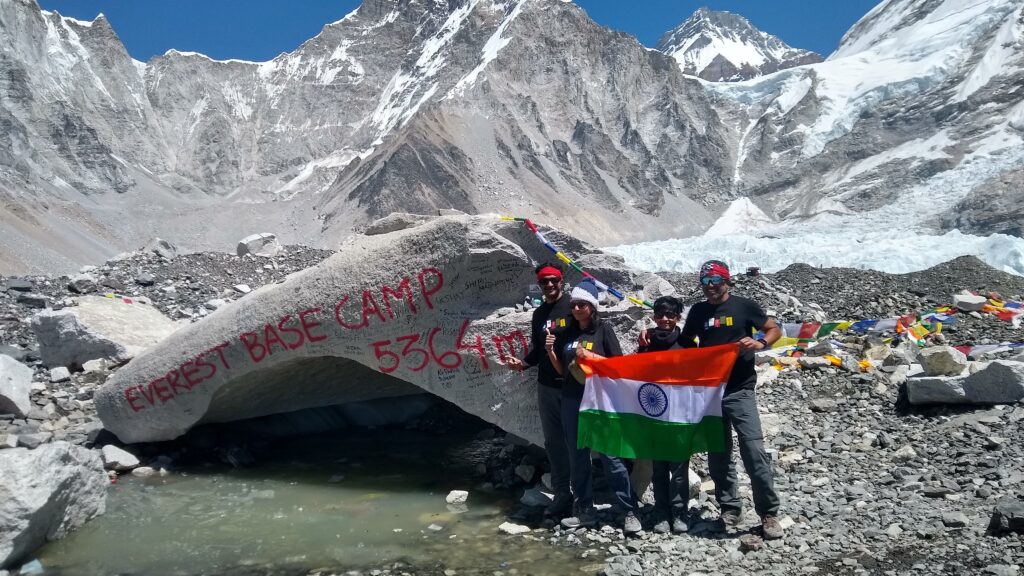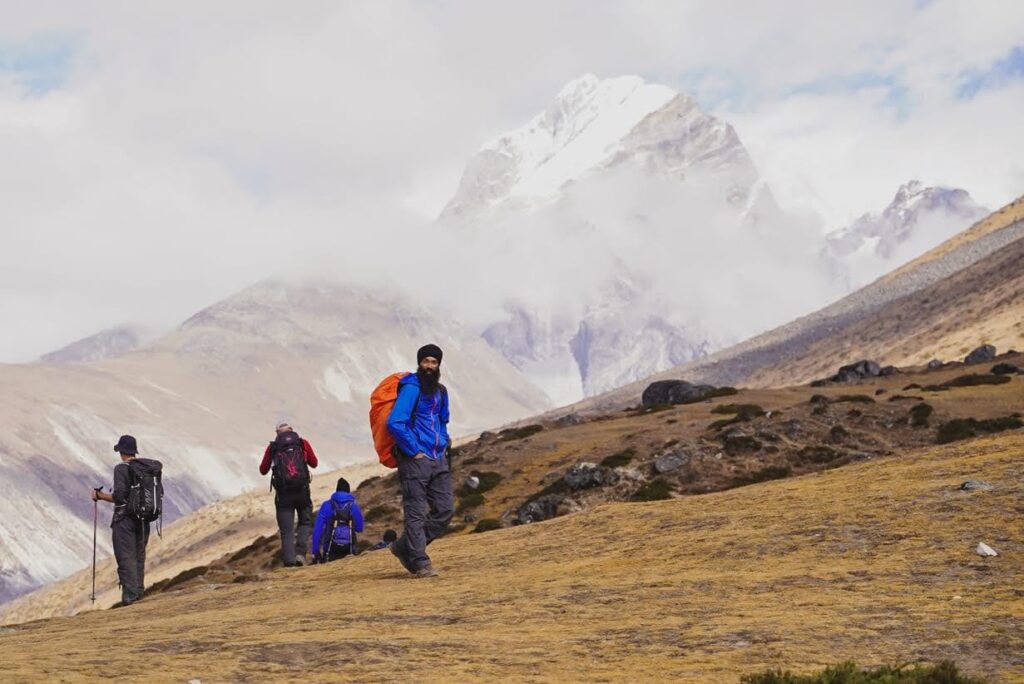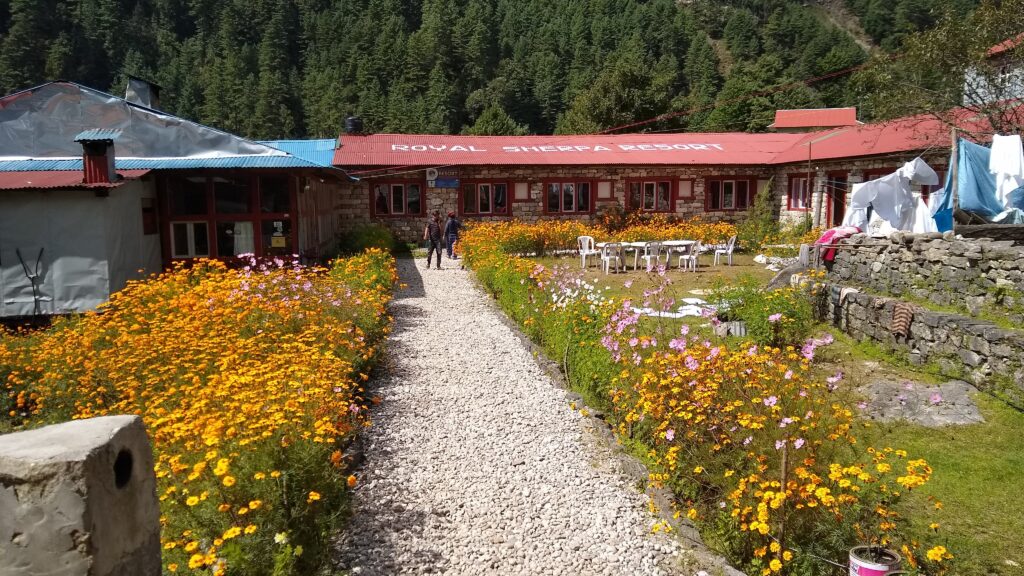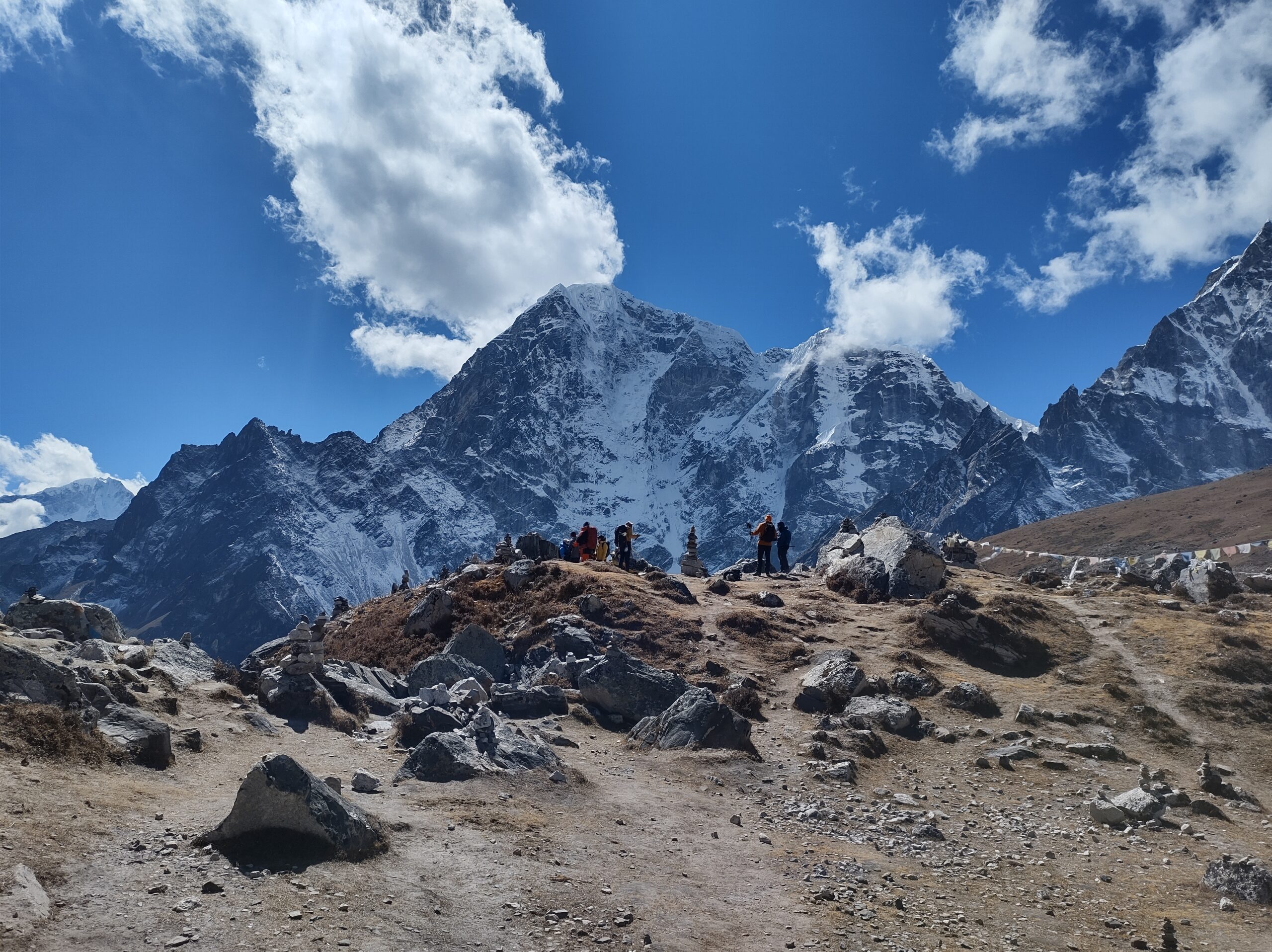Unforgettable Adventures: Embracing the Majesty of Mt. Everest Base Camp Trek
Embark on the ultimate adventure as you conquer the majestic heights of Mt. Everest Base Camp. Nestled in the heart of the breathtaking Himalayas, this iconic trek offers a once-in-a-lifetime opportunity to immerse yourself in nature’s grandeur and witness the awe-inspiring vistas that have beckoned adventurers for centuries.
With each passing step, you’ll be captivated by the rugged beauty of the terrain and the resilience it demands. From crossing suspension bridges draped over roaring rivers to traversing glacial moraines, every moment of this epic journey is an unforgettable experience.
As you ascend to the Base Camp, you’ll be enveloped by the sheer magnificence of the surrounding peaks, including the mighty Everest itself. Standing at an elevation of 5,364 meters (17,598 feet), you’ll be humbled by the realization of the mountain’s legendary status.
Along the way, you’ll have the chance to interact with the local Sherpa community, renowned for their mountain expertise and warm hospitality. Immerse yourself in their rich culture and listen to tales of legendary mountaineers who have tamed these formidable peaks.
Join us as we guide you on this extraordinary expedition, unlocking the secrets of the world’s highest mountain. Are you ready to conquer Mt. Everest Base Camp and create memories that will last a lifetime? The adventure awaits.

Why choose the Mt. Everest Base Camp Trek?
The Mt. Everest Base Camp Trek is a dream come true for adventure seekers and nature lovers alike. But what makes it so special? Let’s explore some of the reasons why this trek should be at the top of your bucket list.
First and foremost, the Mt. Everest Base Camp Trek offers unparalleled natural beauty. The Himalayas are a sight to behold, with their towering peaks, vast glaciers, and serene valleys. The trek takes you through diverse landscapes, from lush forests to barren rocky terrains, providing a feast for the eyes at every turn.
Additionally, the trek is a unique opportunity to challenge yourself physically and mentally. The altitude and rugged terrain present their own set of challenges, requiring stamina, perseverance, and a strong will. Conquering these obstacles and reaching the Base Camp is an accomplishment that will fill you with a sense of pride and fulfillment.
Furthermore, the Mt. Everest Base Camp Trek allows you to immerse yourself in the local culture and traditions. The Sherpa people, with their warm hospitality and rich heritage, will welcome you with open arms. Interacting with them and learning about their way of life is a humbling and enriching experience that adds a whole new dimension to the trek.
In conclusion, the Mt. Everest Base Camp Trek is a once-in-a-lifetime adventure that offers breathtaking natural beauty, physical and mental challenges, and a chance to connect with the local community. It is a journey that will leave you with memories to cherish for a lifetime.
Essential preparations for the trek
Embarking on the Mt. Everest Base Camp Trek requires careful planning and preparation to ensure a safe and enjoyable experience. Here are some essential preparations you need to make before setting foot on this incredible journey.
1. Physical fitness assessment: The trek to Mt. Everest Base Camp is physically demanding, with long hours of walking and steep ascents. Before starting the trek, it is crucial to assess your fitness level and consult with a healthcare professional if necessary. Regular exercise, cardiovascular training, and strength building exercises will help prepare your body for the challenges ahead.
2. Acclimatization: Acclimatization is a vital aspect of trekking at high altitudes. As you ascend, the air becomes thinner, and your body needs time to adjust. It is recommended to spend a few days in Namche Bazaar and Dingboche for acclimatization before continuing towards the Base Camp. This will help reduce the risk of altitude sickness and ensure a safer trek.
3. Packing essentials: Packing smartly is crucial for a comfortable trek. Some essential items to include in your backpack are proper trekking boots, warm clothing, a good quality sleeping bag, a waterproof jacket, gloves, a hat, sunglasses, sunscreen, a first aid kit, and a water bottle. It is also advisable to bring some high-energy snacks for quick energy boosts during the trek. Click to get the Backpacking checklist for the trek.
4. Travel insurance: It is highly recommended to have comprehensive travel insurance that covers medical emergencies, evacuation, and trip cancellation. Make sure to carefully read and understand the terms and conditions of your insurance policy before embarking on the trek.
5. Trekking permits: To trek to Mt. Everest Base Camp, you’ll need to obtain two permits: the Sagarmatha National Park Permit and the Khumbu Pasang Lhamu Rural Municipality Permit. These permits can be obtained in Kathmandu or through a registered trekking agency.
Remember, proper preparation is the key to a successful and enjoyable trek. Take the time to plan and prepare, and you’ll be ready to conquer the majestic heights of Mt. Everest Base Camp.

Everest Base Camp Trekking route and itinerary
The Mt. Everest Base Camp Trek follows a well-established route that takes you through some of the most beautiful and iconic landscapes in the Himalayas. Here is a sample itinerary for the trek, but keep in mind that it can be customized to suit your preferences and fitness level. For Complete information visit our Everest Base Camp trek page.
Day 1: Arrival in Kathmandu, meet your guide and fellow trekkers, and have a briefing about the trek.
Day 2: Fly from Kathmandu to Lukla (2,860 meters) and start the trek to Phakding (2,610 meters).
Day 3: Trek from Phakding to Namche Bazaar (3,440 meters), the gateway to the Everest region.
Day 4: Rest day in Namche Bazaar for acclimatization. Explore the town and enjoy stunning views of Everest and surrounding peaks.
Day 5: Trek from Namche Bazaar to Tengboche (3,860 meters), home to the famous Tengboche Monastery.
Day 6: Trek from Tengboche to Dingboche (4,410 meters), surrounded by beautiful mountain vistas.
Day 7: Rest day in Dingboche for acclimatization. Take short hikes to higher elevations for better acclimatization.
Day 8: Trek from Dingboche to Lobuche (4,940 meters), with breathtaking views of Nuptse, Lhotse, and other peaks.
Day 9: Trek from Lobuche to Gorak Shep (5,170 meters) and continue to Everest Base Camp (5,364 meters). Return to Gorak Shep for overnight stay.
Day 10: Early morning hike to Kala Patthar (5,545 meters) for a stunning sunrise view of Everest. Descend to Pheriche (4,240 meters).
Day 11: Trek from Pheriche to Namche Bazaar.
Day 12: Trek from Namche Bazaar to Lukla.
Day 13: Fly from Lukla to Kathmandu
This itinerary spans approximately 13 days, allowing for acclimatization and a gradual ascent. It is important to note that altitude sickness can be a serious concern, and it is crucial to listen to your body and follow the advice of your guide.
Accommodation and facilities along the trek
During the Mt. Everest Base Camp Trek, you’ll find a variety of accommodation options along the route, ranging from basic tea houses to more comfortable lodges. Here’s what you can expect in terms of accommodation and facilities.
Tea houses: Tea houses are small guesthouses that offer basic accommodation and meals. They are a popular choice among trekkers and provide a cozy and authentic experience. Most tea houses have shared rooms with twin beds or dormitory-style accommodations. The facilities are simple, with shared bathrooms and communal dining areas. However, some tea houses may offer private rooms with attached bathrooms for an additional cost.
Lodges: As you ascend higher, you’ll find lodges that offer slightly more comfort and amenities. These lodges often have private rooms with attached bathrooms, hot showers, and dining halls that serve a variety of meals. While the facilities may not be luxurious, they provide a welcome respite after a long day of trekking.
Facilities: Along the trekking route, you’ll find basic facilities such as restaurants, shops, and even internet cafes in some villages. However, as you go higher, the availability of facilities may become limited. It is advisable to carry essential items with you, such as toiletries, snacks, and trekking gear, to ensure you have everything you need for the journey.
Booking in advance is recommended, especially during peak trekking seasons.

Physical fitness and training for the trek
The Mt. Everest Base Camp Trek is physically demanding, and being in good physical shape will greatly enhance your trekking experience. Here are some tips to help you prepare your body for the challenges ahead.
Cardiovascular training: Trekking at high altitudes requires a good level of cardiovascular fitness. Engage in activities such as running, cycling, swimming, or brisk walking to improve your cardiovascular endurance. Aim for at least 30 minutes of aerobic exercise, three to four times a week.
Strength training: Trekking involves carrying a backpack and navigating uneven terrains. Strengthening your leg muscles, core, and upper body will make the trek more manageable. Incorporate exercises like squats, lunges, planks, push-ups, and shoulder presses into your fitness routine.
Hiking practice: If possible, go on practice hikes in your local area to simulate the conditions you’ll encounter during the trek. Gradually increase the distance and difficulty of these hikes to build your endurance and get accustomed to walking for long hours.
Mental preparation: Trekking to Mt. Everest Base Camp is not only physically challenging but also mentally demanding. Prepare yourself mentally by setting realistic expectations, visualizing success, and cultivating a positive mindset. Stay motivated by researching the trek, reading inspiring stories, and talking to experienced trekkers. It is important to consult with a healthcare professional before starting any new exercise routine, especially if you have any pre-existing medical conditions. They can provide personalized advice based on your health and fitness level.
Safety precautions and challenges on the trek
The Mt. Everest Base Camp Trek presents its own set of challenges and risks, and it is essential to take proper safety precautions to ensure a safe and enjoyable experience. Here are some important safety tips to keep in mind.
Acclimatization: Acclimatization is crucial for trekking at high altitudes. Allow your body enough time to adjust to the increasing altitude by taking rest days and ascending gradually. Listen to your body, and if you experience symptoms of altitude sickness such as headache, nausea, dizziness, or shortness of breath, descend to a lower altitude immediately.
Stay hydrated: Hydration is key to preventing altitude sickness and maintaining your overall well-being during the trek. Drink plenty of water and avoid excessive caffeine and alcohol, as they can contribute to dehydration.
Follow the guide’s instructions: Your guide has extensive experience and knowledge of the trek, so it is important to listen to their instructions and advice. They will be able to assess the weather conditions, trail conditions, and your physical well-being, ensuring your safety throughout the journey.
Pack wisely: Pack only the essentials and avoid carrying unnecessary weight. A heavy backpack can put unnecessary strain on your body and make the trek more challenging. Be prepared for changing weather conditions and pack appropriate clothing layers.
Stay on marked trails: The trekking route is well-marked, and it is important to stay on the designated paths. Straying off the trail can be dangerous, as it may lead to unstable terrain or avalanche-prone areas.
Respect the environment: The Everest region is a pristine and fragile ecosystem. Respect the environment by disposing of waste properly, not disturbing wildlife, and adhering to local customs and regulations. Leave no trace and help preserve the natural beauty of the Himalayas for future generations.
By following these safety precautions and being mindful of the challenges, you can have a safe and unforgettable trekking experience to Mt. Everest Base Camp.
Best time to embark on the Mt. Everest Base Camp Trek
The Mt. Everest Base Camp Trek can be undertaken during two main seasons: spring (March to May) and autumn (September to November). Both seasons offer favorable weather conditions and stunning views, but there are slight differences to consider.
Spring: Spring is a popular time to trek to Mt. Everest Base Camp, with mild temperatures and blooming rhododendrons adding color to the landscape. The days are generally sunny and clear, offering excellent visibility of the mountains. However, spring is also a busy season, and the trails can be crowded, especially during peak months.
Autumn: Autumn is considered the best time for trekking to Mt. Everest Base Camp. The weather is stable, with clear skies and moderate temperatures. The autumn months offer stunning views of the surrounding peaks and a quieter trekking experience compared to the spring season. However, it is still advisable to book accommodation in advance, especially in popular trekking spots.
It is important to note that weather conditions can be unpredictable in the mountains, and it is always a good idea to check the weather forecast and be prepared for changes. Additionally, the trek can be undertaken during the winter months (December to February) and monsoon season (June to August), but these periods come with their own challenges and require careful planning.
Tips for a successful and memorable trekking experience
To make the most of your Mt. Everest Base Camp Trek, here are some additional tips to ensure a successful and memorable experience.
1. Take your time: The trek to Mt. Everest Base Camp is not a race. Take your time to enjoy the breathtaking scenery, interact with the locals, and savor each moment. Trek at a pace that is comfortable for you, and don’t push yourself too hard.
2. Stay hydrated and eat well: Proper nutrition and hydration are essential for maintaining your energy levels during the trek. Drink plenty of water, eat nutritious meals, and indulge in local delicacies to fuel your body.
3. Listen to your body: Pay attention to any signs of fatigue, discomfort, or altitude sickness. Rest when needed, and communicate any concerns or symptoms to your

